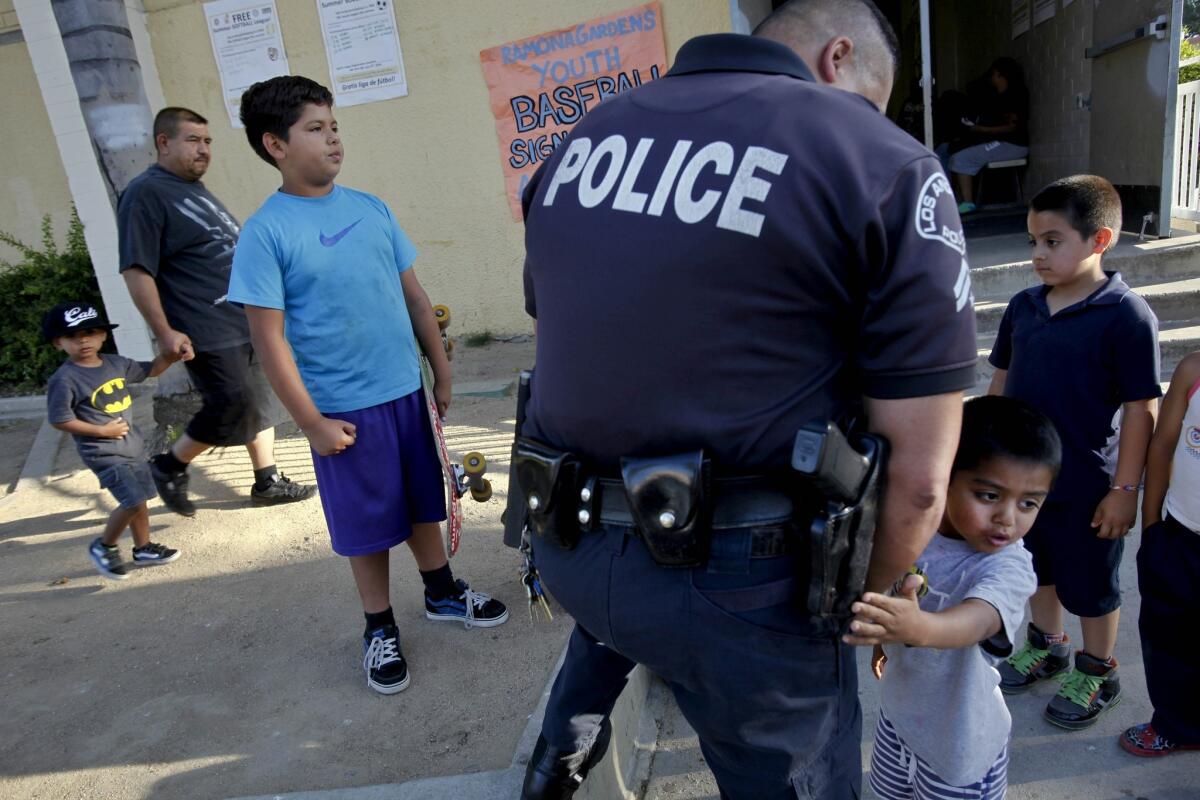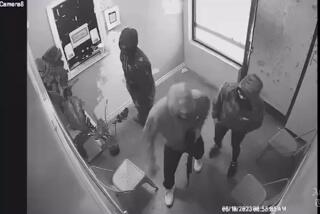Some blacks feel targeted after firebombing at L.A. development

For the last few years, many residents of the Ramona Gardens housing project took pride in a remarkable turnaround.
The Boyle Heights development, once controlled by a Latino gang, had seen crime drop dramatically. African American families were beginning to move back into the rows of garden apartments -- more than 20 years after the firebombing of two black families prompted most African Americans to flee.
Then on Monday night, someone threw flaming Molotov cocktails at four apartments in the development. It had all the hallmarks of the racial attacks of previous years.
Three of the four apartments targeted just after midnight were occupied by black families. The other was occupied by a Latino family. Police have no suspects and have been careful to say the motive remains unclear. No one was hurt in the attack.
But several law enforcement sources familiar with the investigation said officials believe the attack was racially motivated.
The apartment of the Latino family was tucked amid the others. The sources spoke on the condition of anonymity because they were not authorized to speak.
The FBI is working with the Los Angeles Police Department to determine whether any federal civil rights statutes were violated in the attack, bureau spokeswoman Laura Eimiller said Friday.
Either way, the damage has already been done. Some black families immediately put in for emergency transfers to other housing developments, police say.
A few didn’t wait for transfers and simply left. Others are debating what to do.
CJ Johnson, 32, said his family would probably leave soon.
Johnson, who is black, works with special needs children and is married to a Latina. He said the attack “came out of the blue. It’s been peace and love with my family,” he said. “I haven’t had any issues. I’m a family man, and they respect that.”
One black woman, who asked not to be identified out of concern for her safety, said she has already asked for an emergency transfer.
She moved to Ramona Gardens about a year ago and said the atmosphere has been calm until this week. Now, she says, she doesn’t want to take any chances.
“I have a 17-year-old son,” she said.
There are 23 black families living in Ramona Gardens. That number is an increase over last year, when at one point 16 black families lived there. The complex has about 1,791 residents.
The violence was a particular blow to a group of residents -- including former gang members -- who had been working to ease racial tensions and make blacks feel welcome. Even after the firebombing this week, it’s not unusual for black and Latino residents, especially children, to mingle and talk.
In 1992, two black families were firebombed, sending adults and children fleeing into the street. Soon other black families left, leaving Ramona Gardens with virtually no blacks for almost 20 years.
That began to change in recent years. The LAPD, residents, gang intervention workers and others collaborated to keep them safe. Even some people connected to the Big Hazard gang, which has long claimed the area but whose presence has diminished, pitched in—usually behind the scenes.
At a meeting in Ramona Gardens’ gym Wednesday evening, LAPD Capt. Martin Baeza told a mixed gathering of about 100 residents that police were increasing patrols.
“We’re looking to restore a sense of community,” he said in English and Spanish.
Baeza said the LAPD’s Major Crimes unit along with arson investigators from the city’s Fire Department were investigating the attacks but don’t know for sure that race was the motive.
“There have been racial tensions in the past, but there have not been any racial issues recently,” he said.
Police had not received intelligence or chatter beforehand indicating that the attack had been sanctioned by any particular person or gang, he added.
The Molotov cocktails were made with bottles, rags and flammable liquid that ignites when the bottles break. Ramona Gardens has video surveillance cameras, but it’s unclear if they captured the attackers.
Residents said the firebombing was a particular shock because of how relatively good relations between blacks and Latinos have been in recent years.
Resident Jeff Littrell, 49, who is African American, said he and his 12-year-old son Malik like life in Ramona Gardens and are not going to be chased out.
“I’m not going nowhere,” he said in his living room, where trophies belonging to his son—for sports and for winning a spelling bee—sat on a shelf. “I know all the homies, and when I see them I say what’s up and they say what’s up to me.”
Just outside Ramona Gardens, someone planted an orange sign at the corner of Lancaster Avenue and Soto Street that read: “Enough with racism, hate and gangbangin evil nonsense. God don’t like ugly!!! You’ve been warned.”
More to Read
Sign up for Essential California
The most important California stories and recommendations in your inbox every morning.
You may occasionally receive promotional content from the Los Angeles Times.












